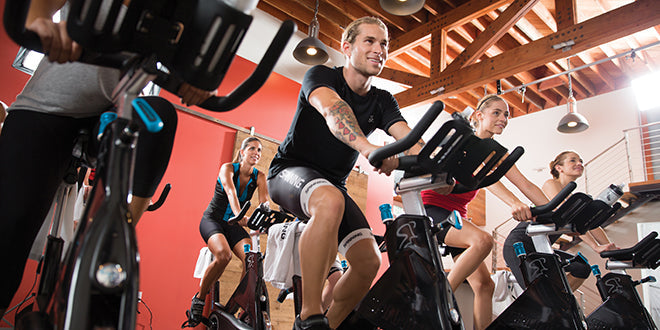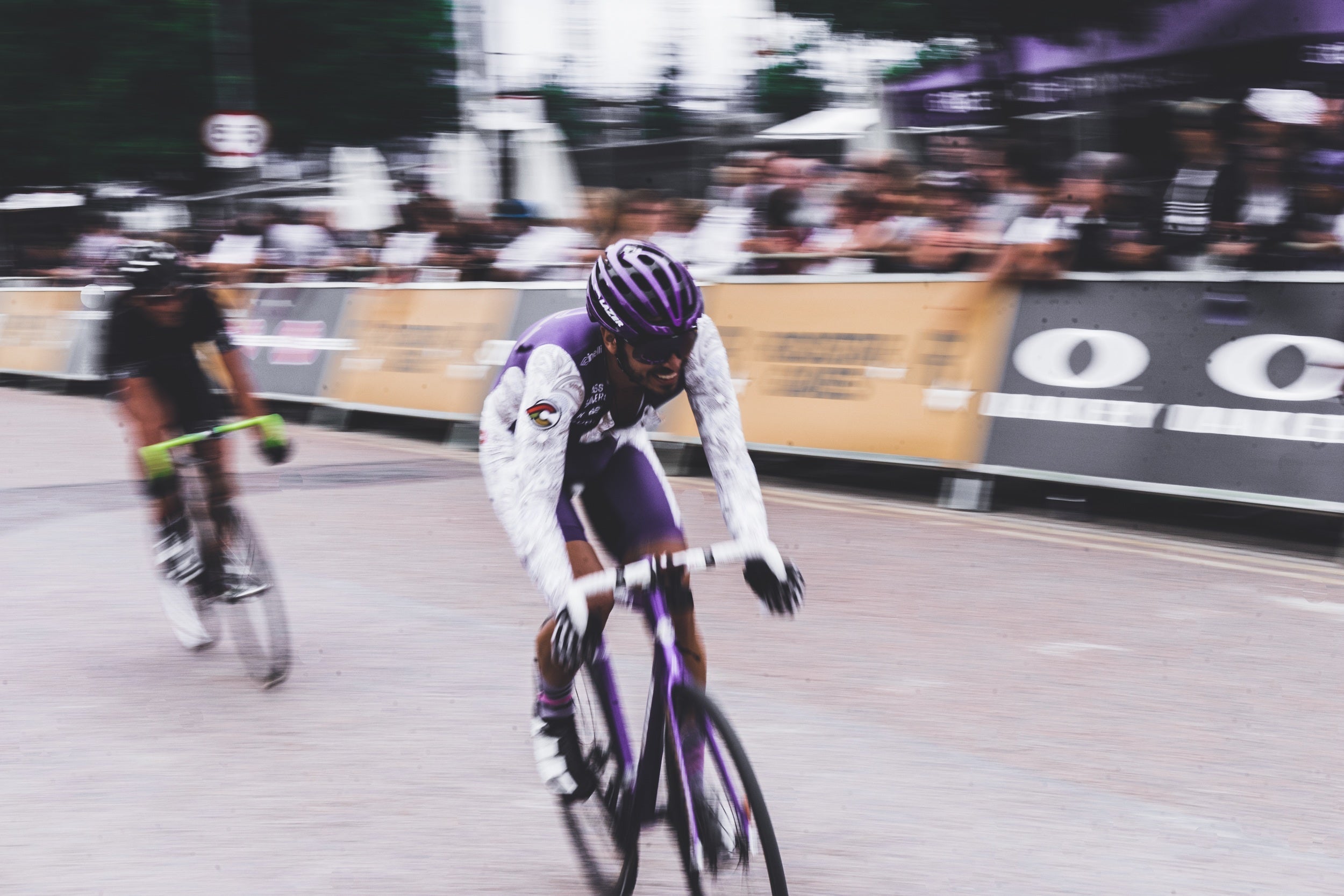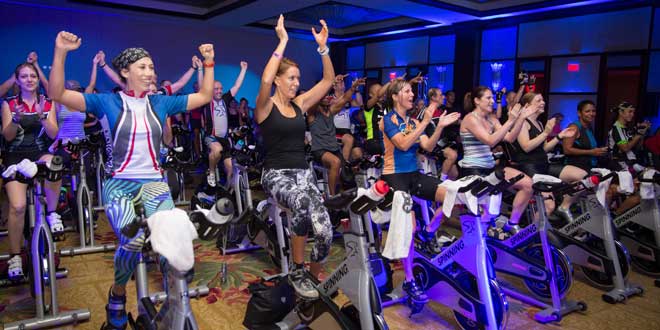By Ralph Mlady, Spinning® Master Instructor | Ohio Cycling cadence (cadence) refers to the number of times a bike rider turns the cranks per minute, also known as revolutions per minute (RPM). Cadence is one of the variables that can be used to manipulate intensity. When combined with proper resistance, cadence can also manipulate the efficiency of the rider’s pedal stroke.As an instructor, you have been asked countless times, “How fast should I be pedaling?” The answer to this question is not always as straightforward as you may think. Ideal cycling cadence has a high level of variability—it can vary depending on the rider’s fitness level, duration of exercise and experience.
What are the Cadence Ranges in Spinning®?
In the Spinning® program, we have cadence parameters of 80-110 RPM on flats, while on the hills we use 60-80 RPM. If we compare these ranges to that of pro cyclists that participated in the grand tours of the 1999 professional cycling season (Giro d’Italia, Tour de France and Vuelta a España) we find that the results are quite comparable with the cadence parameters in the Spinning program. The professionals averaged 89 rpm on flat stages with a range of 80-90 and averaged 71 on the high mountain assents with a range of 62-80 RPM (Burke).Does a Spinning Instructor need to jump off the bike every time someone drifts outside the recommended ranges? The answer to that question depends on how the rider is pedaling. If they are bouncing all over the place above 110 RPM, then yes, the rider needs to slow down and regain control of the flywheel. Likewise, if they are pedaling well below 60 RPM and straining with each pedal stroke, the rider should remove resistance and increase cadence.Why is Proper Pedaling Technique Important?
Cadence is an important skill to develop, even if you have no intention of ever riding outside. Spinning classes require riders to be skillful in their riding technique to get the most out of their training sessions.One major reason for developing an efficient pedal stroke and working toward an ideal cycling cadence, is injury prevention. When someone is out of control or pedaling too slowly, they put themselves at risk of injury. As riders get stronger on the bike, they generate more power per pedal stroke which causes an increase in the amount stress placed on the knee joints. The increase in force on the joints may stress them to the point of injury. Besides, a more efficient pedal stroke will allow the student to generate more power and thus expend more calories.So What is an Optimal Pedal Stroke?
There is no one optimal pedal stroke — the definition varies depending on whether it applies to the stroke that produces the most power, the least fatigue, the most comfort or the greatest economy. Norwegian sports scientists Foss and Hallén define the optimal cadence as one that produces the best performance. Let’s take a closer look at what some of the research says about how a cyclist determines their ideal cycling cadence.What Does the Science Says About Optimal Pedal Stroke?
In a study performed by Neptune and Hull, naturally selected pedal rate chosen by cyclists is considered to be the optimal pedaling rate that minimizes neuromuscular fatigue. They went on to state that fast-twitch muscle fibers are recruited when force requirements are higher. This results in lower mechanical efficiency. Conversely, at lower force requirements and higher cadences, riders recruit more slow-twitch muscle fibers and improve mechanical efficiency, reducing neuromuscular fatigue. Therefore, ideal cycling cadence may be related to the proportion of slow- to fast-twitch muscle fibers in each student. Those with a higher proportion of slow twitch muscle fibers may prefer a higher cadence since the force requirements are lower. Cycling is an aerobic endurance sport and depends on slow-twitch muscle fibers to resist fatigue for as long as possible.Efficiency in cycling is often defined as the cadence that elicits the lowest oxygen cost at a given power output. This pedaling rate is often lower than the preferred cadence. As a result, this lower cadence requires more force per pedal stroke and may result in neuromuscular fatigue. Therefore, most cyclists will find a pedal cadence they can maintain while resisting fatigue and maximizing effective pedal force. Taking this into consideration, we can see how there is a wide variability in preferred cadence among riders.How Do You Apply These Research Findings in a Spinning Class?
The science helps us gain an understanding as to why we choose a particular cadence depending on the terrain we are riding. Newer students often pedal below the cadence parameters we use in the Spinning program. As they gain experience, they will eventually find their own preferred cadence and drift into the normal ranges of 60-80 RPM on the hills and 80-110 RPM on the flats. Over time, riders will develop their skill level and improve their pedal stroke, working toward their ideal cycling cadence.Continue to coach proper pedal rates and the resistance to produce those cadences. Realistic hills and flats can only be accomplished if riders are coached to add or remove resistance to the flywheel that allows their cadence to reflect what would occur on an outdoor bike. Allow riders to experiment with their cadence. They will, over time, align themselves with the proper cadence ranges.Most important, as instructors we must display the proper cadence when we are on the bike. Most of the participants in group exercise classes use visual stimulus as their primary way of processing communication. Those are the students that reach for the resistance when you do without giving a single verbal cue. They will follow your lead. If your pedal stroke is not efficient, how can you expect your students to strive for perfection?References:
- Burke, E. (2003) High-Tech Cycling. Champaign, IL: Human Kinetics.
- Abbis CR, Peiffer JJ, Laursen PB. Optimal cadence selection during cycling. International SportMed Journal 2009; 10(1): 1-15.
- Foss O, Hallén J. Cadence and performance in elite cyclists. European Journal of Applied Physiology 2005; 93: 453-462.
- Neptune RR, Hull ML. A theoretical analysis of preferred pedaling rate selection in endurance cycling, Journal of Biomechanics 1999; 32 409-415.
- Faria EW, Parker DL Faria IE. The Science of Cycling – Factors Affecting Performance – Part 2. Sports Med 2005; 35(4) 313-337.





Leave a comment
This site is protected by hCaptcha and the hCaptcha Privacy Policy and Terms of Service apply.